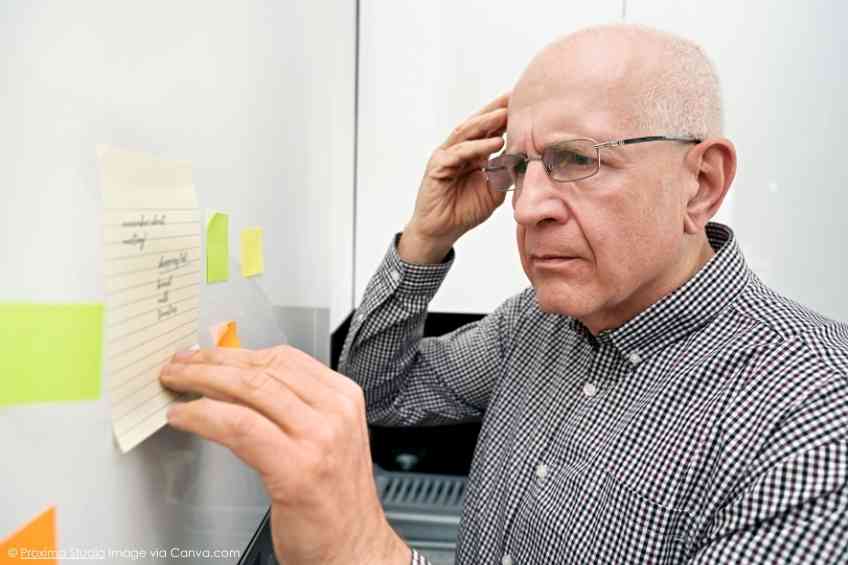Arthritis is no secret for the millions of Americans who suffer from the disease. The aches, pain and stiffness can be devastating and all too common. Unfortunately, what many don’t realize until it’s too late is that there are many kinds of arthritis. Some of these lesser-known varieties can go unnoticed or misidentified. Rheumatoid arthritis fits into this group. While not as common as osteoarthritis, it is nevertheless potentially devastating to those who suffer from it. In an effort to shed light on the realities and relief for rheumatoid arthritis, Dr. Jason Liebowitz recently spoke to WellWell to clear up misconceptions, provide guidance and offer hope to individuals facing this disease. Read on.
Can you define what rheumatoid arthritis is?
When people colloquially use the term arthritis, most of the time they’re probably talking about osteoarthritis, which we can think of as sort of a wear and tear process, though it’s probably more complex than that. But it’s the type of arthritis we might develop with age and is common in the knees, hips and back. Rheumatoid arthritis is in a different category. It’s a type of inflammatory arthritis driven by the immune system mistakenly attacking your own body that typically affects very specific joints. Very commonly it will affect the small joints in the hands, especially the first and second row of knuckles, the wrists and other joints can be affected as well, often in a very symmetric pattern. And there are a few features of rheumatoid arthritis that make it quite distinct.
You may see with those joints, morning stiffness beyond just the first five to 10 minutes that many of us get as we get older, but prolonged morning stiffness lasting for 30, 45, 60 minutes or more. Improvement with use, which is the opposite of what you often see with osteoarthritis, where you more pain as you’re moving around or using those joints. People with rheumatoid arthritis typically feel better as they’re moving around. You might actually see redness, warm swelling and physical changes indicating inflammation in the joints. And there are many ways that we as rheumatologists can diagnose rheumatoid arthritis in a more objective way. But I think the key distinction is that this is an autoimmune process where your immune system is driving the inflammation of the joints.
Would it affect other joints as well?
Yes, so many people with rheumatoid arthritis may also have involvement. Similarly, as you see in the hands, the small joints in the feet, so that first row of knuckles where the toe meets the foot, you can see involvement in ankles, knees, elbows and shoulders. You can sometimes see some spine involvement. Some people with rheumatoid arthritis in particular have cervical spine. So, where the neck is, you can have some of those joints involved. It’s not impossible to involve what we call the axial skeleton, the spine and the pelvis, but it’s less common. And I think most consistently across all people with rheumatoid arthritis, though there might be some variability in which joints are involved, almost invariably the hands and the wrists are.
How widespread is this? Does it affect a particular demographic as well?
It’s estimated that rheumatoid arthritis probably affects about one percent of the global population. Like many autoimmune diseases, it’s more prevalent in women than men, but certainly, men can get this as well and do frequently. There is a lot of work that looks at certain risk factors for rheumatoid arthritis. On a genetic level, there’s actually a member of the faculty here at Columbia where I work, Dr. Robert Winchester help discover what’s called the shared epitope, which is basically a genetic predisposition to the development of rheumatoid arthritis. We know that there are certain genetics that may predispose people to develop this. In the clinic, we don’t really have a great way to test for a lot of this complex genetic story, although you’ll often just be able to uncover family history and you’ll often see some family history pattern. Smoking, we know, is a risk factor because of what smoking does to some of the proteins involved in what the immune system is recognizing. But I would say, generally, this is among the more common types of autoimmune diseases that we’ll see in rheumatology practice.
Is age a factor?
The typical age of onset is between 35 to 50 years or so, so somewhat in middle age. But you can certainly see rheumatoid arthritis in older patients. some patients even into their 70s, 80s or 90s can develop rheumatoid arthritis. It certainly can develop later in life. I’m an adult rheumatologist, but pediatric rheumatology is a field unto itself. And what used to be called juvenile rheumatoid arthritis, JRA is now called juvenile idiopathic arthritis. And there’s actually six different flavors of it. Two of those flavors look a little bit like what you see with rheumatoid arthritis in an adult. So, you can see this phenomenon really across the spectrum from very young children, even into older adulthood.
What drives this disease or the impact of autoimmune conditions with rheumatoid arthritis?
There are many questions that have arisen around what drives autoimmunity, which is still the number one question that people have when they come to see me. When I diagnose an autoimmune disease, people ask, well, why did I get this? There’s probably a complex interplay between genetics, environment, certain lifestyle or risk factors. I think there have been questions about how our diet or exercise or other exposures may play a role. Without getting controversial, think the COVID pandemic revealed interesting phenomena that we’ve long suspected and there are still hypotheses in rheumatology that certain infections may play a role in inciting certain autoimmune diseases, which makes sense because infections trigger the immune system and activate the immune system. And this is a process in which the immune system is overactive. So, it was just interesting that for many of the sickest people with COVID, it was not actually the virus itself that made them so sick, but the immune system’s response to it. So there certainly seems to be some role that infections may play in promoting or inciting autoimmune disease.
You mentioned that as people wake up and they’re stiff, the stiffness will go away as they move about. Is that correct?
If you wake up with a little bit of morning stiffness and joints, don’t diagnose yourself with rheumatoid arthritis. But a common feature across all types of what we call inflammatory arthritis and to step back, that term would apply to other conditions like psoriatic arthritis, ankylosing spondylitis or what’s now called axial spondylarthritis, reactive arthritis the arthritis we see in people with ulcerative colitis or Crohn’s disease. So, in all of these forms of what’s called inflammatory arthritis, some of the defining features include morning stiffness, so people feel stiff after they’ve not been moving around, and typically the joint pain or stiffness gets better as they move around. So many patients will tell me it’s not just the first five to 10 minutes, but prolonged periods, sometimes two hours or more, where they feel extremely stiff and it’s only as they’re moving around and using these joints that they actually feel the stiffness improve. People often get evaluated for rheumatoid arthritis because there are very visible changes. People can look at their joints and they’re visibly swollen or warm or over time can become deformed if this is a progressive condition. But other times they’ve developed joint pain stiffness that seems unusual or different for them. The age of onset is unusual or the degree of stiffness is really persisting and lasting throughout the day. Many patients under those circumstances may appropriately be evaluated for rheumatoid arthritis or other types of inflammatory arthritis.
What are the prolonged health risks of not getting treatment or having it checked out?
Within the joints, if someone does have rheumatoid arthritis, besides the discomfort, it can be an erosive or destructive process, meaning over time, some people with rheumatoid arthritis, because of this recurrent or persistent swelling and inflammation, may actually develop damage to the bones of the joints themselves. And that’s what explains why some people with rheumatoid arthritis develop progressive deformities of the joints. In the hands, you may see the fingers shift towards what’s called ulnar deviation, so shift in a certain direction, or the joints themselves become distorted and deformed, which can really cause significant impairment in function and quality of life. But then outside of the joints, we know that rheumatoid arthritis can actually do many different things, many autoimmune diseases. They can affect joints, but other parts and organs of the body.
One common thing we often screen for or ask about is rheumatoid arthritis can affect the lungs and cause something called interstitial lung disease, which can actually be a pretty serious lung condition. These patients can also at times have involvement that affects their production of blood cells or involves the heart or causes something called vasculitis, which is an inflammation of blood vessels, that can cause severe pain or certain types of rashes, ulcers or other dysfunction. There are definitely other parts of the body that can be associated with rheumatoid arthritis activity. And then we also have learned over time that rheumatoid arthritis in general seems to be associated with an accelerated risk of atherosclerotic disease, meaning increased plaque buildup and worsening cardiovascular disease in some patients. So, we’re very attuned to that fact. Because we talked about smoking as a risk factor for the development of rheumatoid arthritis, it can make the disease worse. And it’s also associated with cardiovascular disease. It’s particularly important with people with rheumatoid arthritis to help them to quit smoking.
Do you know how long it would take for some of these more serious consequences to begin to take hold?
There’s a wide variability both in what parts of the body rheumatoid arthritis may or may not affect and who it affects. It’s a really wide spectrum. If you take 100 people with rheumatoid arthritis, you’ll see very different levels of severity of the joint involvement themselves. This is challenging for some patients because when we make decisions about how aggressively to treat in terms of medications or which medications to use. They may have questions about, well, is this going to cause damage down the line if I don’t treat it? And it’s not universal. Not every person with rheumatoid arthritis will develop that joint damage, but some people will. And we have some ways to predict that the antibodies, the proteins that we test for when we make this diagnosis if those are positive at high levels, that might pretend a worse outcome or people who have really severe high inflammatory markers in the blood or start to demonstrate very early on progression of the disease. Those might be people you would predict are going to have a more difficult prognosis long-term. But it’s hard. We were still working on risk stratifying people to figure out who’s likely to have progression of disease and who’s likely to have involvement of other parts of the body. It’s not an exact science.
Is rheumatoid arthritis more prevalent than other types of arthritis?
Osteoarthritis is still by far the most prevalent type of arthritis. And again, when people hear that a family member has arthritis, in most cases, they’re probably talking about osteoarthritis. Certainly, if that person is describing someone who’s a little bit older, and ends up having a knee or hip replacement, that would be a very typical story of osteoarthritis. So, osteoarthritis remains the most common type of arthritis. And we put it in a different category because it’s not treated in a way where you are using medications that affect the immune system. You’re really treating mostly symptomatically with non-steroidal anti-inflammatories, physical therapy and weight loss. Those would be some of the conventional treatments for osteoarthritis.
What does someone do if they have early signs? What are the first steps if somebody thinks they have rheumatoid arthritis?
It’s a balance of trying to figure out when a symptom becomes persistent, severe or unusual enough to seek medical care. And that’s an individual case-by-case decision. But I would say if someone is noticing frequent red hot swollen joints, that’s often not normal and would reasonably benefit from further evaluation. If someone develops, if we’re talking about rheumatoid in particular significant morning stiffness in some of those joints we were mentioning, particularly the wrists and that first and second row of knuckles. As an aside, that last row of knuckles called the DIP joints, the closest to the fingernails, for some reason are completely spared in rheumatoid arthritis. So if you see changes in those joints, then you’re pretty much not dealing with rheumatoid arthritis but the other two, the middle and the first row of knuckles and the wrists, if you’re experiencing pain, stiffness, particularly if it seems like a morning predominance gets better with activity, if your age is somewhat younger, although as we said, it doesn’t rule it out if you’re older. But if you feel like this is a change, I think those are good reasons to discuss first with a primary care doctor, some of these symptoms. The primary care doctor can be very helpful and doing some initial testing and then also helping to decide if a referral to a rheumatologist is appropriate. From there, more in-depth studies can be done because when you’re thinking about as a rheumatologist, the possibility of someone having rheumatoid arthritis, often in my mind, I’m also thinking about other inflammatory arthritis that they might also have if they have psoriatic arthritis or inflammatory bowel disease associated with arthritis or lupus. It actually becomes more complex because when you evaluate someone who seems to be showing symptoms and signs of this larger category called inflammatory arthritis, you then should be asking questions and thinking about all the subcategories of that larger group and thinking about testing that would be appropriate to narrow down on what’s the exact diagnosis for that patient.
Would primary care physicians be able to help somebody with rheumatoid arthritis?
I think for this particular condition, primary care doctors are very helpful in maybe doing some of the initial diagnostic work. In some cases, certainly, in some parts of the country where there are not a lot of rheumatologists because we face a shortage of rheumatologists in many parts of the United States, it actually may fall on primary care doctors if they don’t have other options. Interestingly, I think telehealth has alleviated this a little bit to allow people who are far from a rheumatology office to at least interface through the computer with a rheumatologist or their doctor. There are some programs where rheumatologists can provide remote support to primary care doctors around the country. But I think if you have access to a rheumatologist, I think that it makes sense to see them because rheumatoid arthritis, the treatments can be varied. We’re lucky that we live in an era of many good, excellent treatments for this condition, but it requires a lot of nuanced understanding of which treatments may be most appropriate for that patient when it’s appropriate to consider, to evaluate if the treatment is working well or not working well, in-depth discussions about when you change treatments. So, I think it can get complicated and often benefits from the care of a specialist.
What types of treatments are available?
For most people when they’re diagnosed with rheumatoid arthritis, they may or may not at the beginning part require or use prednisone or other steroid medications just to calm down the inflammation. But broadly across rheumatology, we really try to minimize steroid use because of all the secondary effects. They very quickly can help alleviate inflammation and help patients feel better, but quickly people will develop issues with high blood sugar, risk for diabetes, osteoporosis and other complications. So, the main treatments that we’re looking to help people with include medicines that have been around for many decades. The four main ones are methotrexate, hydroxychloroquine, leflunomide and sulfasalazine. Those four oral medicines have been around for many years and each one or sometimes in combination is very appropriate often to start the treatment of rheumatoid arthritis. And then many people will be probably aware of their television imploring them to ask their rheumatologist about a whole host of medicines that we all hear about, which are called biologics. That includes groups of agents of medications, which over the past 25 to 30 years have been developed and take advantage of our more nuanced understanding of the specific pathways of the immune system that are driving inflammation and rheumatoid arthritis. There are categories of these medications, but they include what are called TNF inhibitors or JAK inhibitors or CTLA for medications and B-cell depleting agents. There are groups of medications that are biologics, often meaning that they are more specifically directed at certain pathways in the immune system. Those may be appropriate treatments for many patients.
How effective are these treatments? Is it a matter of slowing the progression? Can we cure it?
I should say that I’m lucky that I trained in the era where we already had biologic medications available to patients. Because when I speak with some of my colleagues who started their careers 30 or 40 years ago, they describe a different world. They said it was not uncommon for the waiting rooms of rheumatology offices to be filled with many people using canes and wheelchairs at very early ages because of the progression of these types of erosive, destructive arthritis like rheumatoid arthritis. And luckily, we really have seen a significant improvement in our ability to treat and manage rheumatoid arthritis. We don’t yet have a cure for rheumatoid arthritis. The treatments that we have available to use for patients, we really can achieve disease remission in a majority of patients and get people back to their normal lives. I talk with patients and we have many ways to measure how we’re doing in terms of a decrease in inflammatory markers in the blood work, preventing damage on x-rays or other imaging and the physical exam showing less redness, warmth and swelling. But at the end of the day, I really think the most important thing is when I speak with patients and ask them, do you feel like you’re physically able to do the things that you want to do? Do you feel that your symptoms are under adequate control in the context of how you felt before you were diagnosed with rheumatoid arthritis? And for many people, we can get them at or very close to how they felt in general before the onset of the disease. One challenge across rheumatology is once we find a medicine or group of medicines that help treat something like rheumatoid arthritis, in the vast majority of cases, you have to continue those medicines in order to continue to keep the disease in remission or low activity, which is frustrating to patients because it would be great if we could treat for a period of time and then stop and still see the benefit. We do try to consolidate treatment, meaning if people are on two medicines, but we feel one may be doing most of the work, we may try to decrease the dose or remove the second medicine, but most people with rheumatoid arthritis require ongoing treatment to keep their disease under good control.
Have we made advances in treatment?
I’m pleased with where our field has gone over the past few decades. And people often talk about the prebiologic and postbiologic era, which was a game changer in our field and the treatment of rheumatoid arthritis and many other conditions. We’re lucky to live in that era and many people are benefiting from those treatments. And we still see newer treatments being developed, which are essentially sort of cousin medications of existing therapies. There’s a cautious optimism about this possible new era, which we might be embarking upon.
There’s something called CAR T cell therapy, which at my institution, Dr. Anca Askanese and Dr. Alana Bernstein, who are in different fields of other autoimmune diseases, lupus and scleroderma, are running clinical trials on this type of CAR T cell therapy, which briefly is a process that’s been used in oncology and cancer treatment for about the past 10 years, in which a patient’s own blood cells are removed from the body, a certain number of them. The T cells, a certain type of white blood cell, are genetically modified and made to recognize certain specific cells in the body that are labeled in one case, something called CD19, a certain marker on certain cells that are causing problems. In cancer, those are the cells that are implicated in the person’s malignancy. But now in autoimmune disease, they’re the cells that seem to be driving processes like rheumatoid arthritis or lupus. And those genetically modified T cells are infused back into the patient and sort of like serial killers, they go through the body and they kill the cells that are labeled in the way that they are meant to recognize them through that genetic modification. And it’s really demonstrated incredible results, particularly lupus was the disease that was first treated in this fashion in Germany a number of years ago. And we’re now seeing a huge number of clinical trials looking at other autoimmune diseases, including rheumatoid arthritis. Although, we have many effective treatments, there’s not as much in the way of therapies directed at CAR T cell therapy for rheumatoid arthritis because we have existing therapies. But I’ll share that myself and many of my colleagues have seen patients who’ve been treated with CAR T cell therapy for other reasons. I have a patient who had rheumatoid arthritis and also developed a lymphoma. And when she was treated for the lymphoma with CAR T cell therapy as a wonderful side effect, her rheumatoid arthritis improved dramatically. She’s now been several years off of any medication for rheumatoid arthritis and is still not seeing a return of her symptoms. It’s still in clinical trials. This is still an experimental therapy that’s being evaluated. We may learn that there are obstacles that we don’t anticipate, but it’s definitely greatly excited us as a field of rheumatologists about the possibility of treatments that may not only be very effective for many of the diseases that we treat but may also allow people to avoid long-term use of steroids or other medications and still have good control of their disease.
For something like this sort of treatment that’s going through various stages of trials and exploration, how long does it take before we know whether it’s effective?
It’s going to be on the magnitude of many years. I believe the first patient who was knowingly treated for an autoimmune disease, lupus, with CAR T cell therapy, is about five or five and a half years from the time of treatment and is still doing well and is not required to go back on treatment for their lupus. But I think we’re all eager to see the potential benefits. How long will they last? Will there be unintended consequences? I should say already there was already a report from the FDA that there’s a potential for this type of CAR T cell therapy to trigger cancers associated with the therapy. So that’s been a possible concern. The treatment itself can sometimes be complicated when people get that infusion with significant immune-mediated neurologic effects or what’s called a cytokine storm, where the immune system becomes very active, though we have ways to treat that acutely. I think we still will require many years of follow-up to see that there are no unintended consequences of this therapy that we haven’t predicted and to see how effective it remains in the patients treated over time.
What’s the biggest misconception when it comes to rheumatoid arthritis?
When people use the term arthritis, I think many people may not know that most times when people describe arthritis or a doctor tells you they see arthritis on your x-rays, in most cases, they’re describing osteoarthritis, which is a very different condition not driven strongly by the immune system. The other misconception is that rheumatoid arthritis can cause joints to become visibly red, hot or swollen, many times the symptoms will be there, that prolonged morning stiffness, the effect on joints that would be unusual for more common osteoarthritis or the age of onset much earlier than you would expect for osteoarthritis. But if someone doesn’t see actual swollen joints, they may be hesitant to have that evaluated, but I think that people can hopefully learn a little bit about what rheumatoid arthritis looks like and how it can manifest. And if you are concerned that you may be demonstrating some of those symptoms, it’s worth talking with your doctor and exploring it further.
 About Jason Liebowitz, MD
About Jason Liebowitz, MD
Dr. Jason Liebowitz is a rheumatologist specializing in autoimmune diseases, including rheumatoid arthritis (RA). His clinical practice and research focus on inflammatory arthritis, musculoskeletal disorders and autoimmune-related conditions. He is also an assistant professor of medicine in the Division of Rheumatology at Columbia University Irving Medical Center. He completed his undergraduate studies at Johns Hopkins University, where he was inducted into Phi Beta Kappa. He earned his medical degree from Johns Hopkins University School of Medicine and completed his Internal Medicine residency at Johns Hopkins Bayview Medical Center, serving as Chief Resident. Dr. Liebowitz then pursued a Rheumatology fellowship at Johns Hopkins Hospital, during which he was nominated for the 2019 Distinguished Fellow Award by the American College of Rheumatology. He has also co-edited the textbook Clinical Innovation in Rheumatology: Past, Present, and Future and the textbook series Interdisciplinary Rheumatology.
Please visit drjasonliebowitz.com to learn more.













